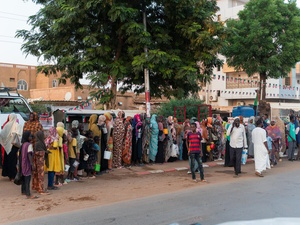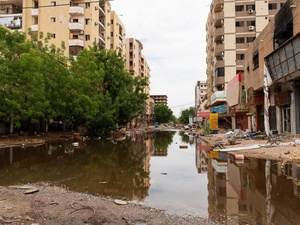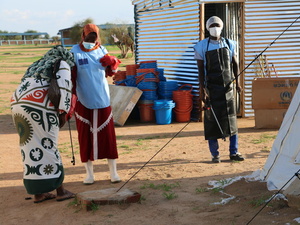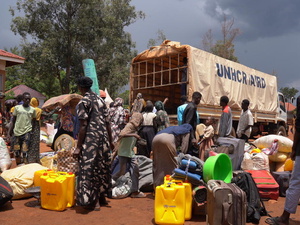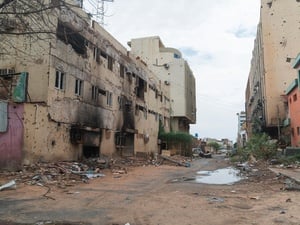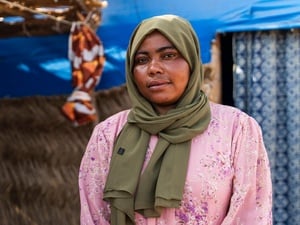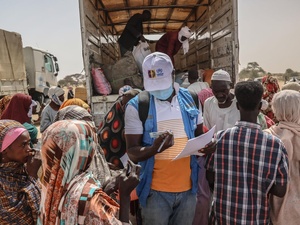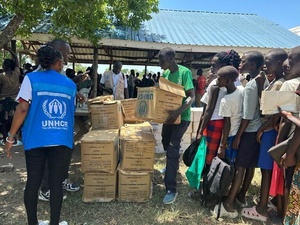Terrified refugees at Ethiopian camp could be relocated soon
Terrified refugees at Ethiopian camp could be relocated soon

Some 24,500 Sudanese refugees in Fugnido camp could be moved to a safer location soon.
ADDIS ABABA, Ethiopia, Feb 21 (UNHCR) - Three months after ethnic clashes at an Ethiopian camp left scores of Sudanese refugees dead, the government of Ethiopia has identified a new site for 24,500 refugees who want to be moved out of the tension-filled Fugnido camp.
The UN Security Co-ordinator is now visiting the proposed site to make sure it is safe for staff of the UN refugee agency and its partner non-governmental organisations (NGOs) to work there.
"Everything hinges on the security situation," said Peter Okoye, UNHCR Deputy Representative in the Ethiopian capital, Addis Ababa. "The Ethiopian government has pledged that adequate security will be provided, but the UN Security Co-ordinator is now looking at what the situation is really like on the ground."
At present, the entire region around Fugnido is off-limits to UN workers because of the ethnic conflict.
Moving the refugees became critical after a spate of ethnic clashes over five months last year killed 107 refugees in Fugnido camp in western Ethiopia. The worst violence occurred on November 27, when the Anuaks clashed with the Nuers and Dinkas, leaving 42 dead and 46 children orphaned. A number of suspects have been charged with the killings and brought to court. The clashes within Fugnido reflected tensions between the same ethnic groups in the local community outside the camp.
With a history of revenge killings dating back to 1995, all the ethnic groups involved agreed that relocating the Nuers and Dinkas was the only practical and feasible solution. This move would leave nearly 8,000 Anuak refugees at Fugnido, where they are happy to stay as they are surrounded by a local community of Anuaks.
The proposed site of the new camp is Odier, in western Ethiopia, 56 km from the border with Sudan. Odier was chosen because of its accessibility, proximity to administrative and security establishments, and most importantly, because the refugees themselves wanted to move there.
Odier is surrounded by 3,000 Ethiopian Nuers who have pledged that they will protect both the Nuer and Dinka refugees if they move there. In January, a combined mission by UNHCR and the Ethiopian refugee agency, ARRA, concluded that "it is unlikely that there will be external attacks" at Odier as there had been at Fugnido.
The mission also found that the 108-hectare site at Odier has adequate water resources and a good supply of grass, bush and trees, such that environmental damage should be minimal. The UN refugee agency will need $1.8 million to develop the site into a refugee camp.
Meanwhile, some terrified Nuer and Dinka refugees at Fugnido camp have already returned to Sudan, fearing another attack by the Anuaks. This week, Mahmood Syed Hussain, head of the UNHCR office in Gambella, near Fugnido, toured the camp and reported that a number of huts had been abandoned and that the refugees had taken their doors and windows with them when they left.
"They have returned to Pochalla, a border town in southern Sudan, where they will wait to return to Ethiopia once the new camp is established in Odier," said Hussain. He did not know how many refugees have returned to Sudan in the last month.
To best protect the remaining refugees, "we firmly believe the move to Odier is the best option, and we just hope that we will be able to proceed quickly," said Okoye.


